
Date: July 17, 2021
Location: Lat: 35.222450°, Lon: -58.032272°
Dive depth range: 2,580 - 2,807 meters (8,465 - 9,209 feet)
Access Dive Summary and ROV Data
This slime star was seen opening then closing its osculum, which is the central hole visible on the sea star that allows water to come in and out in much the same way a fish flushes water over its gills. It was imaged at during a depth of 2,719 meters (8,920 feet) on Dive 12 of the 2021 North Atlantic Stepping Stones expedition. Video courtesy of NOAA Ocean Exploration, 2021 North Atlantic Stepping Stones: New England and Corner Rise Seamounts. Download largest version (mp4, 31.1 MB).
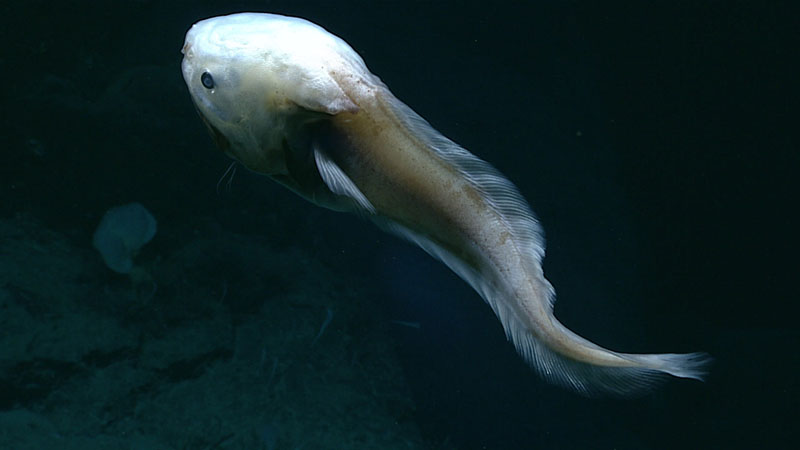
This cusk eel in the family Ophidiidae was seen at a depth of 2,782 meters (9,127 feet) during Dive 12 of the 2021 North Atlantic Stepping Stones expedition. Image courtesy of NOAA Ocean Exploration, 2021 North Atlantic Stepping Stones: New England and Corner Rise Seamounts. Download largest version (jpg, 575 KB).
During Dive 12 of the 2021 North Atlantic Stepping Stones expedition, we had a close encounter with this cusk eel at a depth of 2,670 meters (8,760 feet). Video courtesy of NOAA Ocean Exploration, 2021 North Atlantic Stepping Stones: New England and Corner Rise Seamounts. Download largest version (mp4, 96.3 MB).
Dive 12 of the 2021 North Atlantic Stepping Stones expedition was the first dive of the expedition to take place within the New England Seamount Chain, as we explored "Y" Seamount (formerly referred to as “Unmapped Twins”). This previously unmapped and unexplored seamount was the easternmost of the New England Seamounts that we will explore during the expedition.
During the dive, we observed a range of geological features — from small-scale ripples on a sedimented seafloor with thin crusts of igneous rock cropping out of the sediment to a mass-wasting deposit of igneous boulders and cobbles, intact lobate flow structures of igneous rock coated with ferromanganese crust, and a large vertical pillar that appeared to be a volcanic parasite cone.
Biological observations were sparse at the beginning of the dive, during the deepest part of the transect. As we reached the upper areas of the dive, the density and diversity of organisms did increase, and we observed several large bamboo and primnoid coral colonies as well as several species of glass sponges and demosponges, brisingid sea stars, sea cucumbers, anemones, and a few fish.
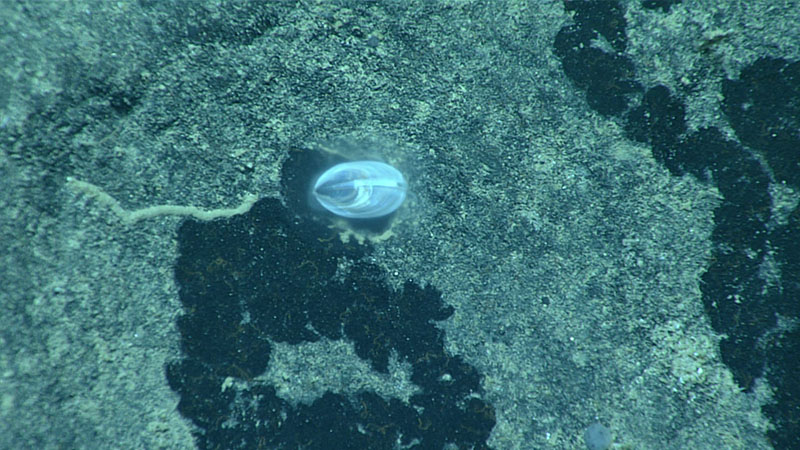
During Dive 12 of the 2021 North Atlantic Stepping Stones expedition, we observed this slit limpet, a kind of sea snail in the family Fissurellidae, genus Zeidora. The slit limpet was actively eating away the surface of a rock, leaving a visible, darkly colored feeding track in its wake. As this was an unusual observation, the slit limpet was collected for further analysis. Watch a video of the slit limpet. Image courtesy of NOAA Ocean Exploration, 2021 North Atlantic Stepping Stones: New England and Corner Rise Seamounts. Download largest version (jpg, 1.3 MB).
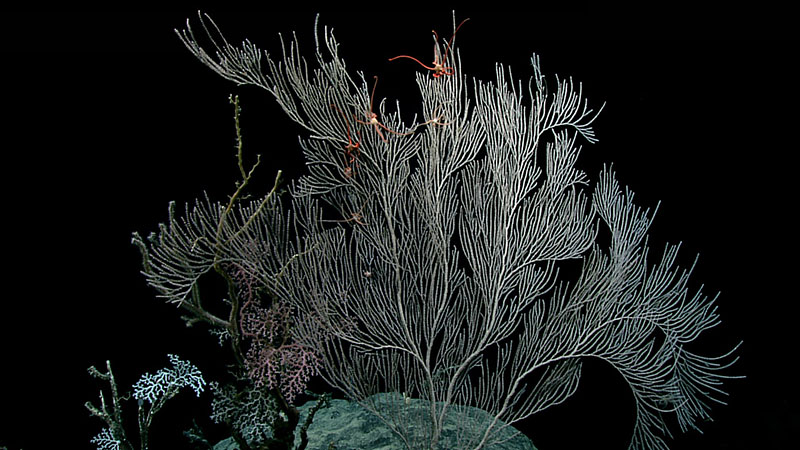
This large primnoid coral colony with several brittle stars entwined in its upper branches was observed during Dive 12 of the 2021 North Atlantic Stepping Stones expedition. We saw several of these primnoid colonies, many that were more than 1.5 meters (5 feet) tall, during the upper areas of the dive. Image courtesy of NOAA Ocean Exploration, 2021 North Atlantic Stepping Stones: New England and Corner Rise Seamounts. Download largest version (jpg, 1.1 MB).
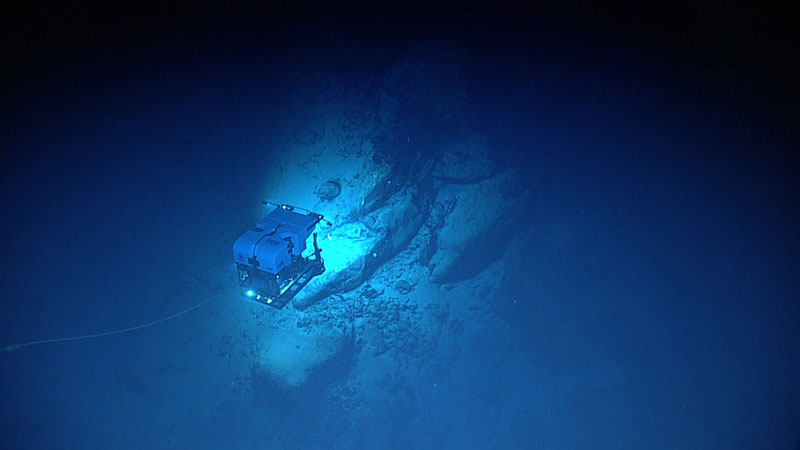
After landing on rippled sediment to start Dive 12 of the 2021 North Atlantic Stepping Stones expedition, the remotely operated vehicles moved towards a steep slope, along the way encountering a large boulder field that looked to be the result of mass wasting of igneous rocks from above. In many places, debris flow of rock cobbles and sediment chutes were evident. In this area of bouldered terrain, we observed black corals, as well as sparse, mostly dead bamboo corals. Image courtesy of NOAA Ocean Exploration, 2021 North Atlantic Stepping Stones: New England and Corner Rise Seamounts. Download largest version (jpg, 525 KB).
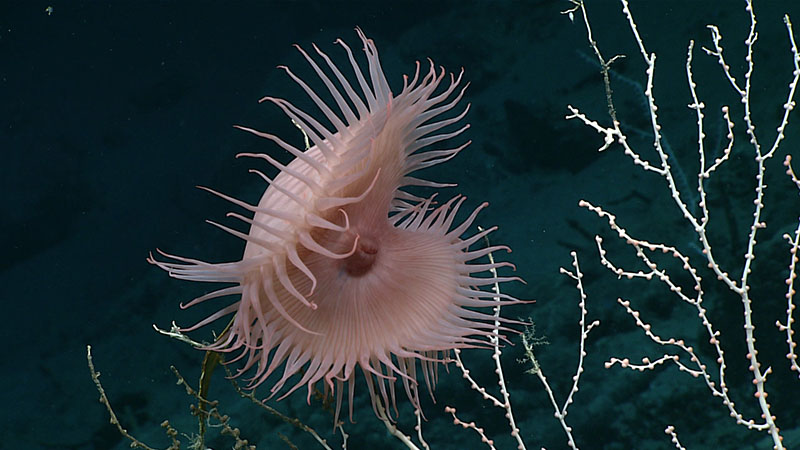
This beautiful Venus flytrap anemone was observed perched high on the branches of a bamboo coral at a depth of 2,766 meters (9,075 feet) during Dive 12 of the 2021 North Atlantic Stepping Stones expedition. Image courtesy of NOAA Ocean Exploration, 2021 North Atlantic Stepping Stones: New England and Corner Rise Seamounts. Download largest version (jpg, 912 KB).
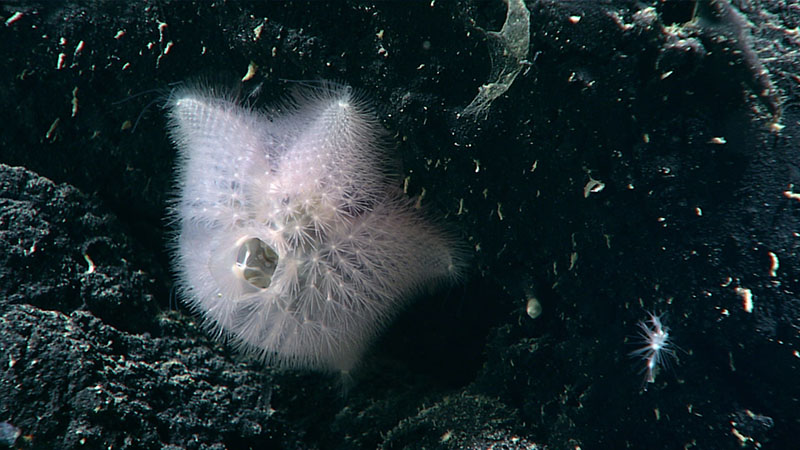
It’s not hard to see why this rather fuzzy-looking slime star belongs to the phylum Echinodermata, which literally means “spiny skin.” The central hole visible on the sea star is its osculum, which allows water to come in and out in much the same way a fish flushes water over its gills. Image courtesy of NOAA Ocean Exploration, 2021 North Atlantic Stepping Stones: New England and Corner Rise Seamounts. Download largest version (jpg, 1.1 MB).
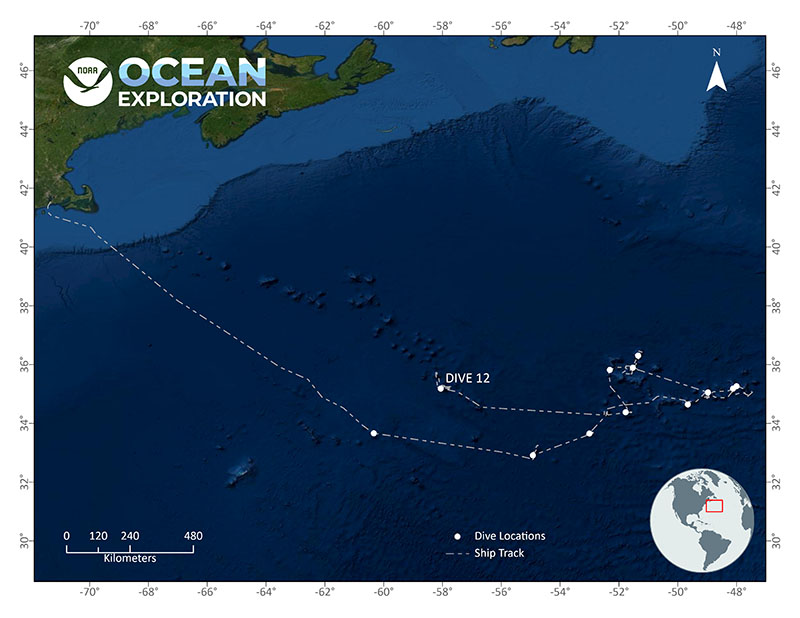
Location of Dive 12 of the 2021 North Atlantic Stepping Stones expedition on July 17, 2021. Map courtesy of NOAA Ocean Exploration, 2021 North Atlantic Stepping Stones: New England and Corner Rise Seamounts. Download largest version (jpg, 3 MB).
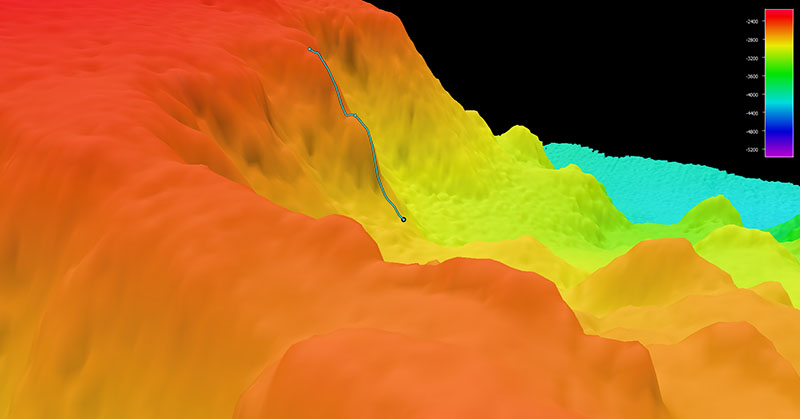
Image showing the dive track of Dive 12 of the 2021 North Atlantic Stepping Stones expedition. Scale is water depth in meters. Image courtesy of NOAA Ocean Exploration, 2021 North Atlantic Stepping Stones: New England and Corner Rise Seamounts. Download largest version (jpg, 434 KB).